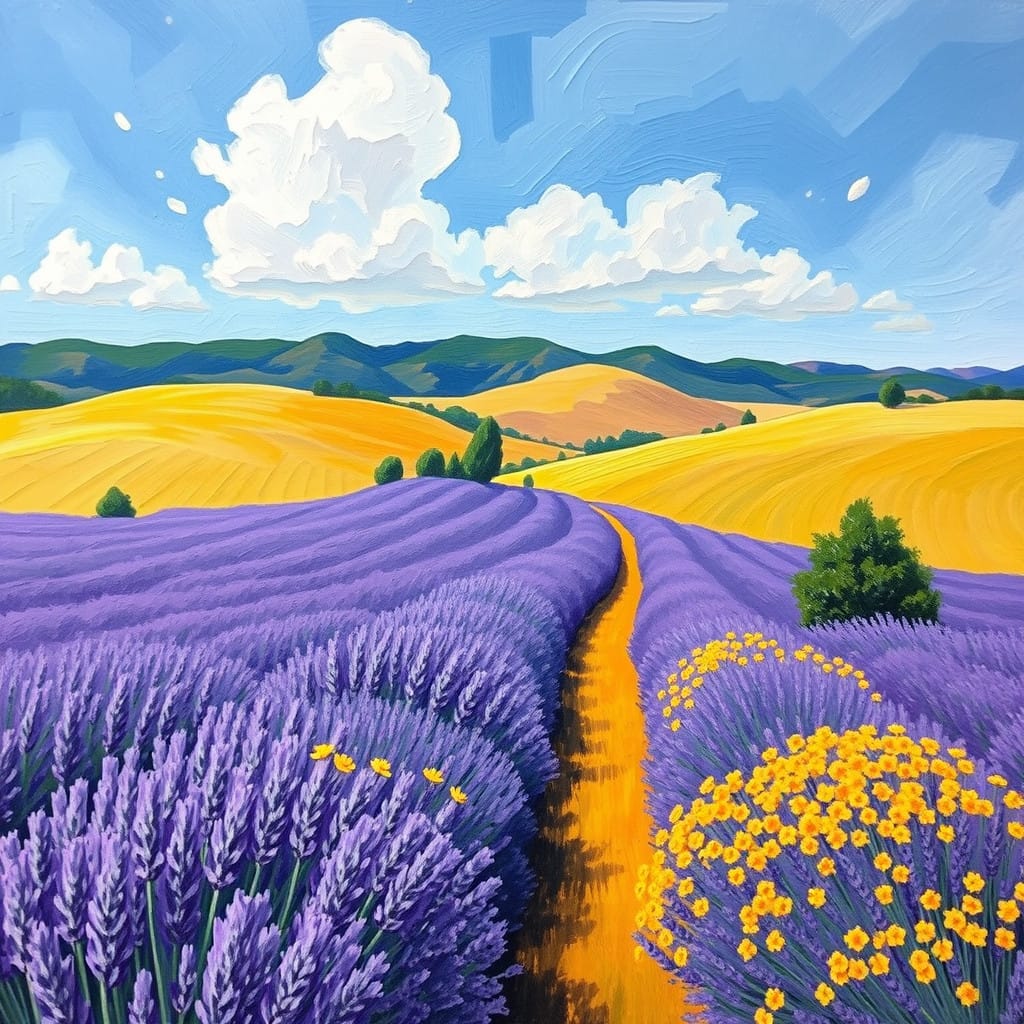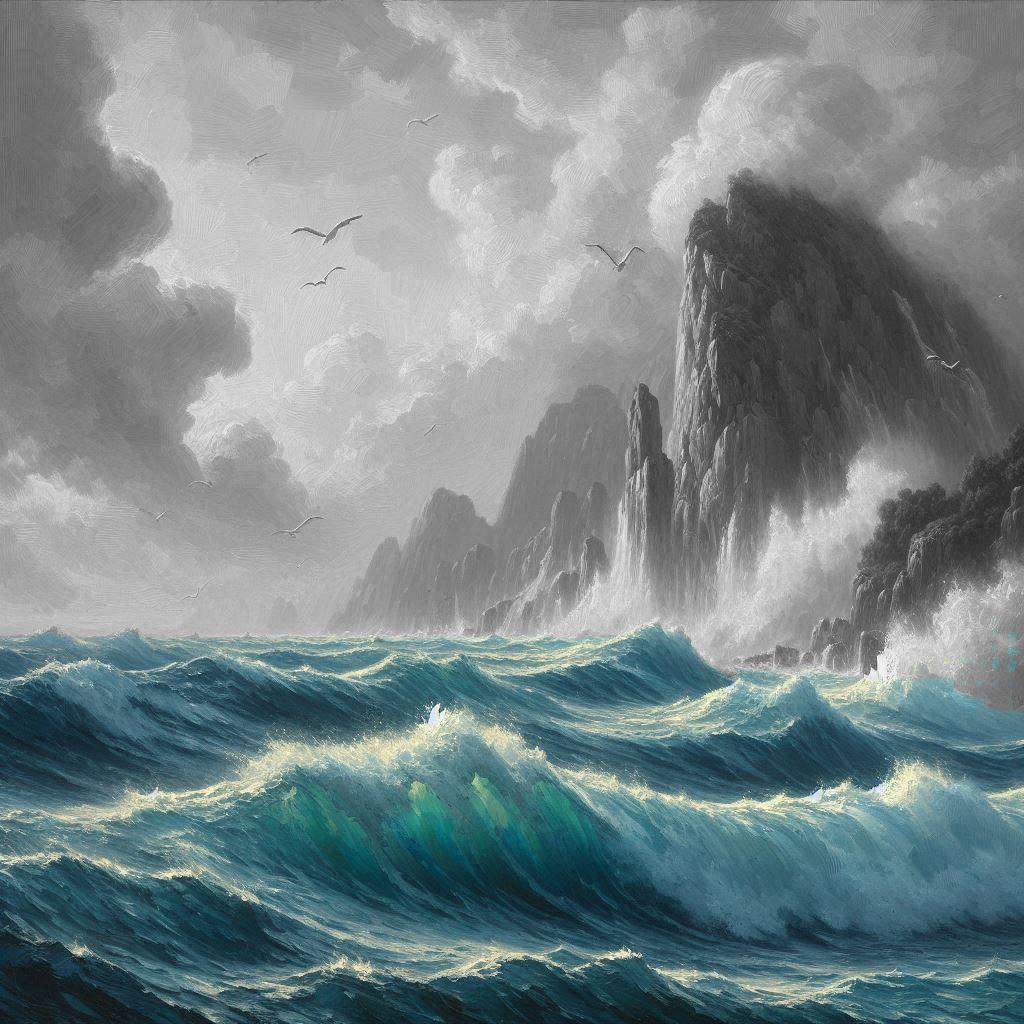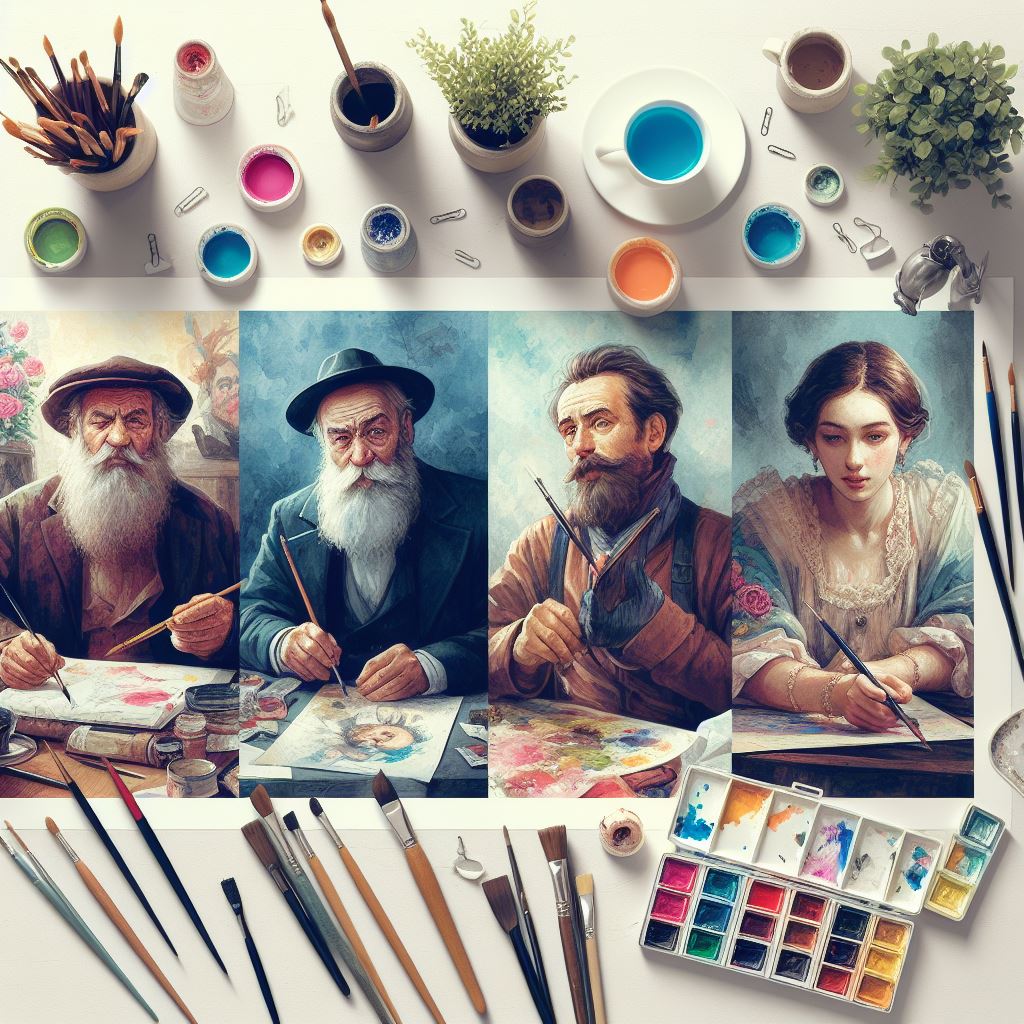Are you new to the world of oil painting? The rich colors and beautiful textures of oil paints are captivating, but the medium can often seem intimidating, especially for Beginner Oil Painters. If you’re wondering where to start your artistic journey, you’re in the right place. We’ve compiled a list of ten essential techniques designed specifically to help new artists navigate the fundamentals of oil painting and begin creating with confidence.
Key Points
- Mastering the Basics: The article emphasizes the importance of understanding foundational techniques such as color mixing, the “fat over lean” principle, and proper brushwork to build a strong artistic foundation.
- Building Depth and Dimension: Learn how to create realistic and compelling artwork through techniques like underpainting, glazing, and value studies, which add layers of complexity and sophistication to your paintings.
- Essential Studio Practices: The guide covers crucial studio habits, including how to properly use a palette, the significance of edge control in defining subjects, and the final step of varnishing to protect and enhance your finished work.
- For the Aspiring Artist: This comprehensive list of ten techniques is specifically curated to help beginner oil painters navigate the medium with confidence and avoid common frustrations.
Podcast: Tips for Beginner Oil Painters
In this article, we’ll explore 10 essential techniques that every beginner oil painter should know. We’ll also touch on some friendly tips to help you find more resources and improve your skills.
Video: Oil Painting Tips
1. Understanding Color Mixing
One of the most fundamental aspects of oil painting is color mixing. Unlike acrylics, oil paints allow for rich, layered colors that can be blended to create almost any hue. Here are some key points to remember:

- Primary Colors: Red, blue, and yellow are the primary colors. You can mix these to create secondary colors like green, orange, and purple.
- Tints and Shades: Add white to a color to create a tint (lighter version) and black to create a shade (darker version).
- Color Wheel: Familiarize yourself with the color wheel to understand color relationships and how to create harmonious palettes.
Resource: Color Mixing for Beginners
2. Layering Techniques (Glazing)
Layering, or glazing, is a technique where you apply thin, transparent layers of paint over dried layers. This method allows you to build up color and depth gradually.
- Start with a Base Layer: Use a thin, opaque layer as your base.
- Add Glazes: Apply thin layers of transparent paint on top to adjust color and add depth.
- Wait for Drying: Allow each layer to dry completely before adding the next.
Resource: Glazing Techniques in Oil Painting
3. Brushstrokes and Texture
The way you apply paint can greatly affect the texture and feel of your painting.
- Impasto: Apply thick layers of paint with a palette knife or brush to create a textured, three-dimensional effect.
- Smooth Brushstrokes: Use a soft brush and thin paint for a smooth, even surface.
- Experiment: Don’t be afraid to mix different brushstrokes and textures in the same painting.
Resource: Brushstrokes in Oil Painting
4. Underpainting

An underpainting is a base layer of paint that sets the tone for the rest of the painting. It can be monochromatic or colored and helps establish the composition and values.
- Monochromatic Underpainting: Use a single color, often burnt sienna or umber, to block in the shapes and values.
- Colored Underpainting: Use a colored underpainting to set the overall mood of the painting.
Resource: How to Create an Underpainting
5. Value Study
Value refers to the lightness or darkness of a color. A value study helps you understand the lighting and shadow in your composition.
- Create a Value Sketch: Use a range of grays to sketch the values in your composition before adding color.
- Use a Value Scale: A value scale can help you accurately represent the light and dark areas in your painting.
Artwork Value Checker
Upload a color image of your art to see its grayscale version and get an instant analysis of its tonal balance.
Original
Grayscale Values
Value Analysis
6. Fat Over Lean Principle
In oil painting, the “fat over lean” principle refers to the amount of oil in each layer of paint.
- Lean Layers: The first layers should have more medium (like linseed oil) and less oil.
- Fat Layers: Subsequent layers should have more oil and less medium.
- Why It Matters: This prevents cracking and ensures that your painting lasts for years.
Resource: Fat Over Lean Principle
7. Using a Palette
Your palette is your canvas for mixing colors. Here are some tips:
- Organize Your Colors: Arrange your colors in a logical way, such as by the color wheel.
- Clean Your Palette: Keep your palette clean to avoid muddying colors.
- Use a Mixing Medium: Add a medium like linseed oil to your paints on the palette for easier mixing.
Resource: How to Use a Palette
8. Creating Depth and Dimension
Depth and dimension are crucial for creating a realistic painting.
- Atmospheric Perspective: Objects farther away appear lighter and less detailed.
- Overlapping: Objects that overlap create a sense of depth.
- Shading and Highlights: Use shading and highlights to give form to objects.
Resource: Creating Depth in Painting
9. Painting Edges
Edges refer to the transition between different areas of the painting. They can be hard or soft, depending on the effect you want.
- Hard Edges: Use a dry brush or a sharp knife to create defined edges.
- Soft Edges: Blend colors together or use a wet-on-wet technique for a softer transition.
Resource: Painting Edges
10. Varnishing Your Painting
Once your painting is complete and dry, varnishing can protect it and give it a uniform sheen.
- Wait for the Paint to Dry: Allow your painting to dry completely, which can take several months.
- Choose the Right Varnish: There are different types of varnish, such as gloss, satin, and matte. Choose one that suits your style.
- Apply Evenly: Use a clean brush to apply the varnish in thin, even layers.
Resource: How to Varnish an Oil Painting

Conclusion
Mastering these 10 techniques will give you a strong foundation in oil painting. Remember, practice is key, so don’t be afraid to experiment and make mistakes. With time and dedication, you’ll develop your own style and create beautiful works of art.
If you’re looking for more resources, consider checking out some of the blogs and videos we’ve linked throughout this article. Happy painting!
Frequently Asked Questions (FAQs)
What are the basic techniques of oil painting?
The foundational techniques for oil painting include understanding color mixing, applying the “fat over lean” rule (using more oil in subsequent layers), mastering various brushstrokes, and preparing your canvas with an underpainting. These basics are crucial for creating well-structured and durable artwork.
What should a beginner oil painter paint first?
Beginners should start with simple subjects to practice the fundamental techniques. Still lifes are an excellent choice as they allow you to control lighting and composition while focusing on color, form, and texture. Simple landscapes can also be a good starting point for exploring atmospheric perspective and blending.
Is oil painting hard for beginners?
Oil painting can have a steeper learning curve compared to other mediums due to its slow drying time and the need to understand specific principles like “fat over lean.” However, many beginners find the medium forgiving as the slow drying time allows for corrections and blending. With a grasp of the basic techniques, it can be a very rewarding experience.
What is the ‘fat over lean’ rule in oil painting?
The “fat over lean” rule is a fundamental principle to prevent cracking in oil paintings. It means that each subsequent layer of paint should have a higher oil content (be “fatter”) than the one beneath it. This ensures that the top layers dry slower than the bottom layers, maintaining the integrity of the paint film.
How do you start an oil painting for beginners?
A good way to start an oil painting is by preparing your canvas with a toned ground or a detailed underpainting. This establishes the basic composition and values of your piece. From there, you can begin to build up layers of color, keeping the “fat over lean” principle in mind, and gradually refine the details of your subject.



